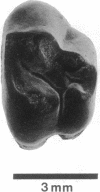Abstract
Recent expeditions to the Fayum Depression, Egypt, have made possible the discovery of mandibles and a maxilla of a new genus and species of late Eocene elephant-shrew as well as initial evidence of the upper dentition of the early Oligocene taxon Metoldobotes. These fossils demonstrate that macroscelideans underwent a significant radiation in the Early Tertiary of Africa. Two new subfamilies are recognized and described. These Tertiary macroscelideans are the most primitive elephant-shrews known and indicate that previous hypotheses of a close phylogenetic relationship between macroscelideans and either lagomorphs, erinaceotans, or tree-shrews are unlikely. Rather, the dental anatomy of the Fayum macroscelideans provides evidence for a derivation of the order from within the Condylarthra.
Full text
PDF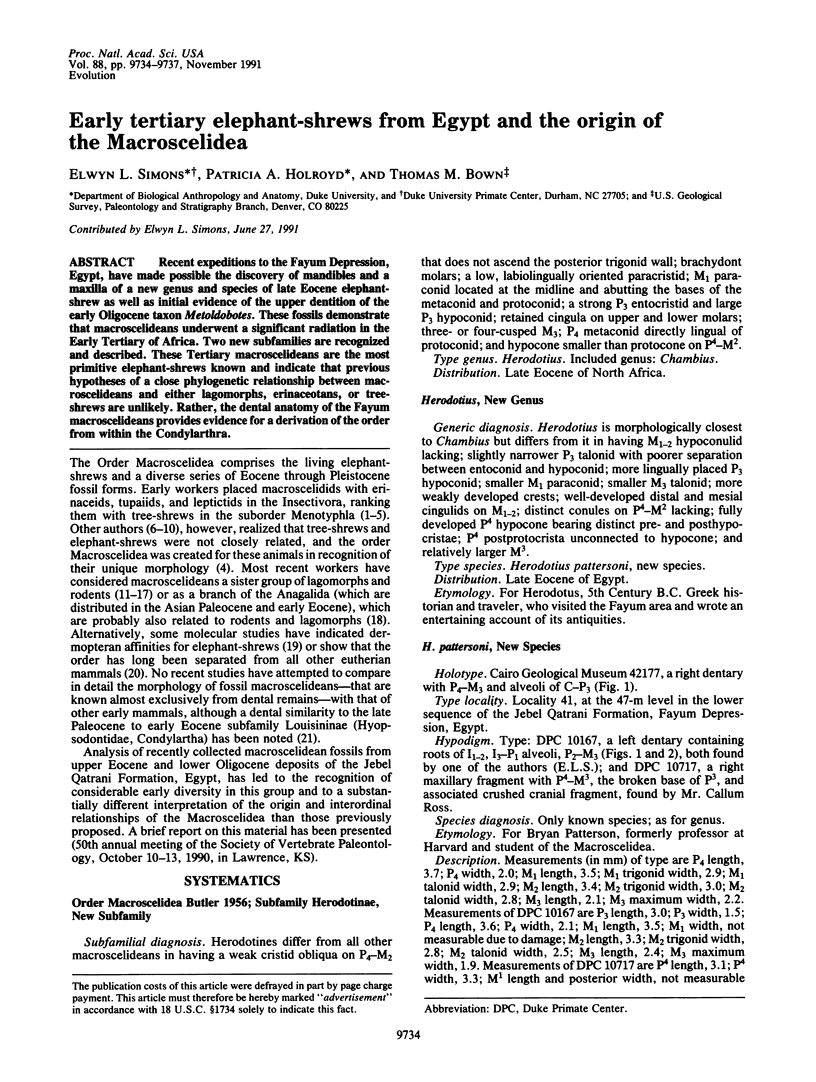
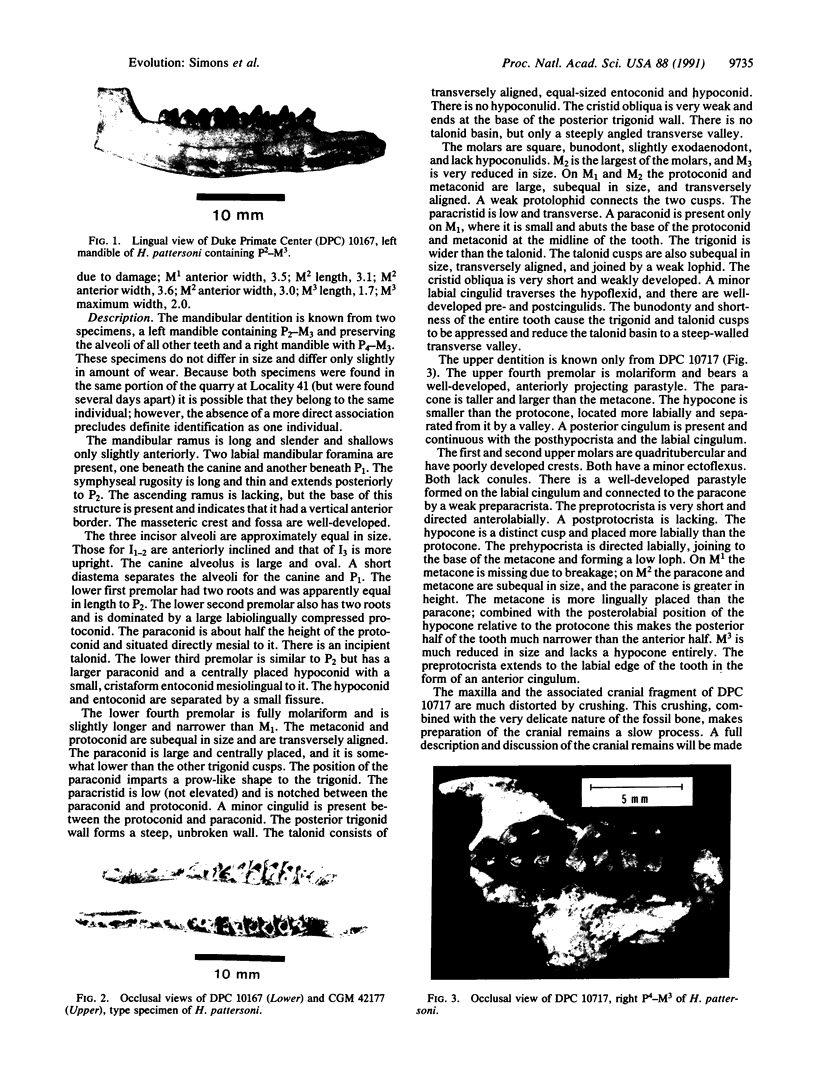
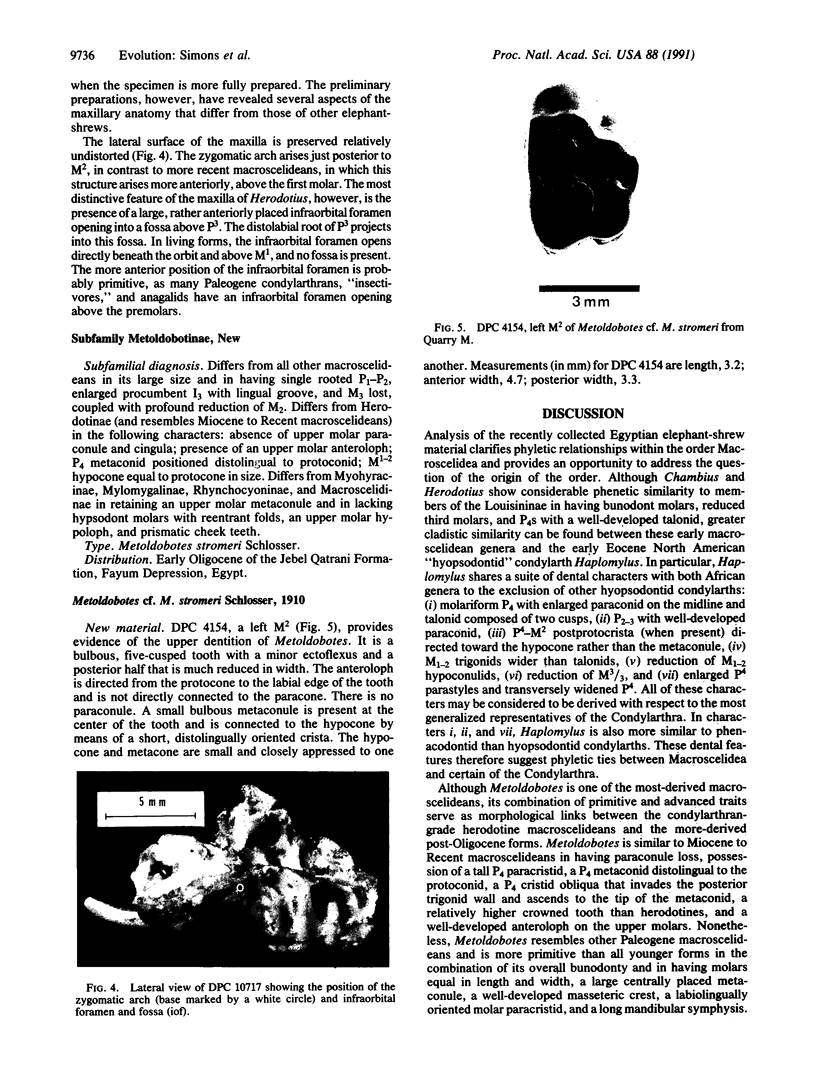
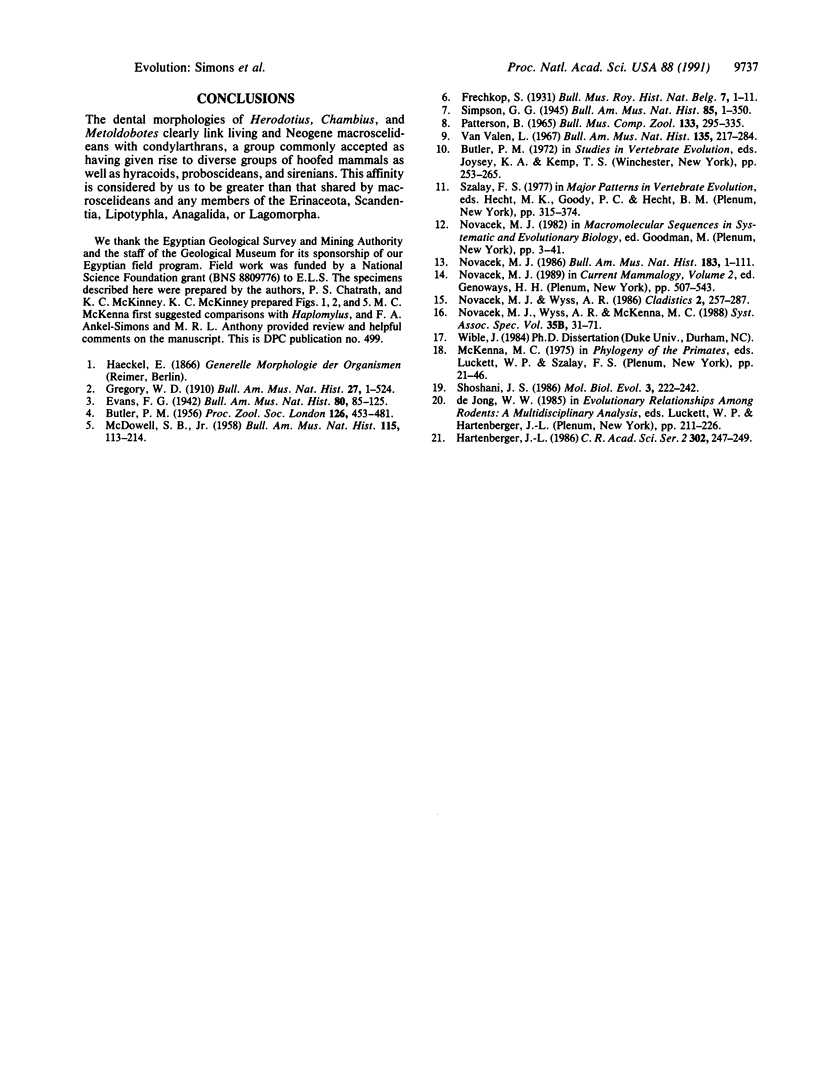
Images in this article
Selected References
These references are in PubMed. This may not be the complete list of references from this article.
- Shoshani J. Mammalian phylogeny: comparison of morphological and molecular results. Mol Biol Evol. 1986 May;3(3):222–242. doi: 10.1093/oxfordjournals.molbev.a040389. [DOI] [PubMed] [Google Scholar]






